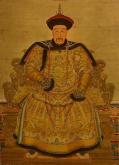| What is the life story of Emperor Qianlong? Qianlong Emperor, whose real name is Hong Li, was born fifty years of Kangxi in August and died Jiaqing four years the first month, is the sixth Qing emperor, after entering the pass of the fourth emperor. He was the fourth son of Emperor Yongzheng, is a rabbit, fifty years of Kangxi was born in Prince Yong House. The first year of Yongzheng, Hong Li has been established as Prince Edward, labeled, and Shuo Bao Prince eleven years, the country began to participate in military priorities. Yongzheng thirteen years, Yongzheng's death, Hong Li came to the throne, changed
| 
|
the Qianlong era name. As a result, he points to the highest point of Chinese society at that time began to throw its weight around, "Wenzhiwugong." Qianlong reign of sixty years, to step down after three years as overlord without illness, died at 89 years of age. |